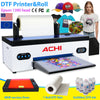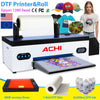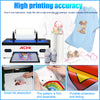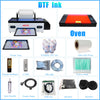Top 4 DTF Printing Mistakes of ACHI A3 Roll DTF Printer to Avoid
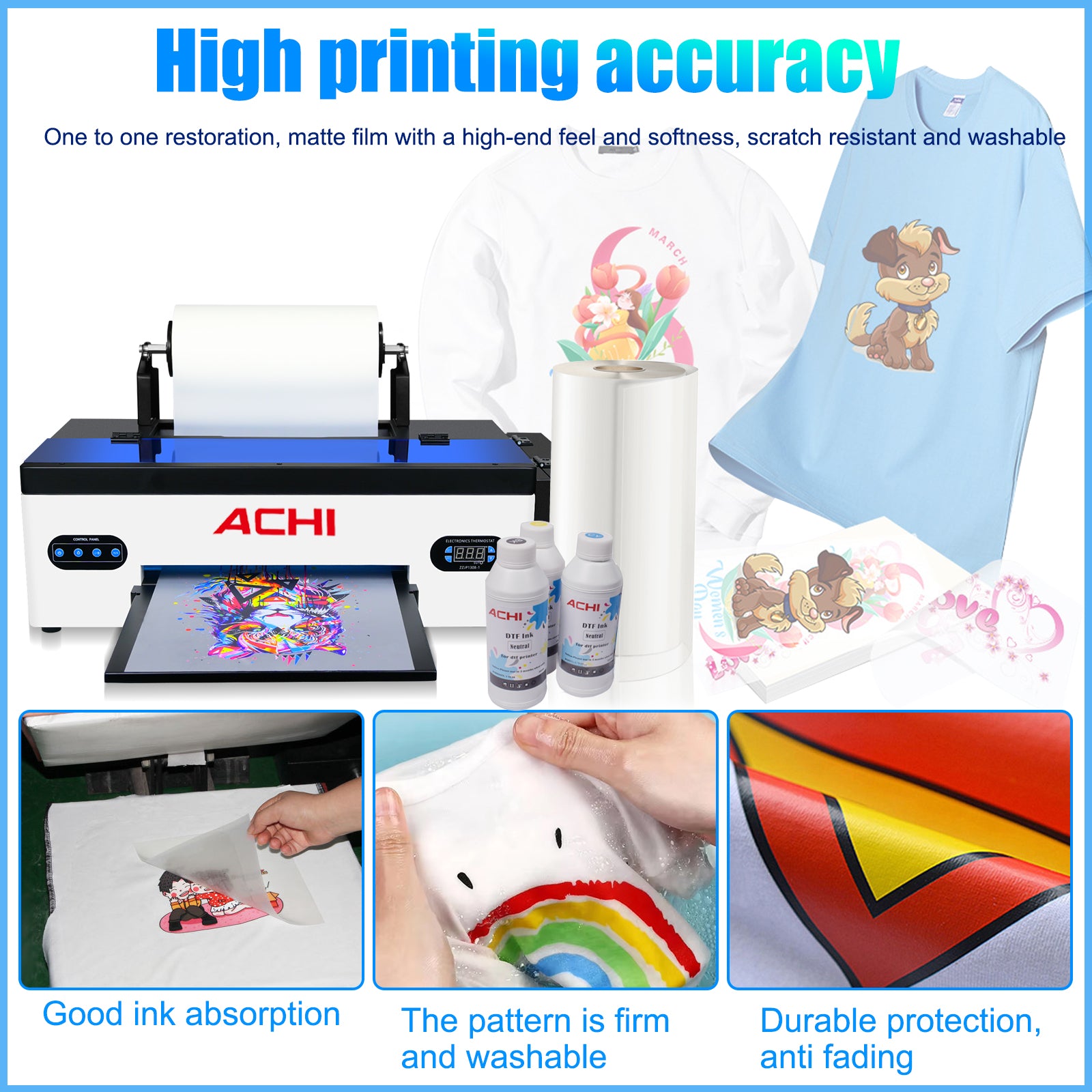
Direct-to-Film (DTF) printing has revolutionized the garment decoration industry, offering vibrant, durable prints on a wide range of fabrics.
The ACHI A3 Roll DTF Printer is a popular choice for many businesses, balancing quality and efficiency. However, to achieve consistent, high-quality results, it’s crucial to avoid common printing pitfalls.
Based on industry expertise and user experiences, here are the top five mistakes to avoid when using your ACHI A3 Roll DTF Printer.
1. Incorrect Film Handling and Loading
The A3 Roll DTF printer is designed for roll-to-roll printing, which offers great efficiency but also introduces the risk of film handling errors.
-
The Mistake: Improperly loading the PET film, incorrect tension settings, or using low-quality, incompatible film can lead to wrinkles, misprints, and even printer jams. This can waste film, powder, and ink, causing costly downtime.
-
The Solution: Always ensure the film is loaded straight and securely onto the unwinder and rewinder rollers. Follow the manufacturer's guidelines for tension settings specific to the ACHI A3 model. Use high-quality, recommended PET film that has the correct coating to ensure proper ink adhesion and prevent cracking after pressing.

2. Neglecting Regular Print Head Maintenance
The heart of any DTF printer is its piezoelectric print head. The ACHI A3 printer's performance is directly tied to how well this component is maintained.
-
The Mistake: Skipping daily or weekly maintenance routines, such as automated cleaning cycles or manual capping station checks, can lead to clogged nozzles. This results in banding, missing colors, and streaky prints. A severely clogged head is expensive to repair or replace.
-
The Solution: Establish a strict and consistent maintenance schedule. Perform automatic cleanings as recommended. Conduct regular nozzle checks to identify any clogs early. Use high-quality inks that are less prone to drying and clogging. Always power down the printer properly so the head parks in the capping station, preventing the ink from drying out.

3. Improper Curing and Powder Shaking
The curing process is what makes DTF prints durable. This involves melting the plastic powder to bond the ink to the film.
-
The Mistake: Inconsistent powder application or incorrect curing temperature and time. Not shaking the powder well enough can cause clumps, leading to an uneven finish and poor adhesion. Under-curing makes the print weak and prone to washing out, while over-curing can yellow the white ink and make the transfer brittle.
-
The Solution: Vigorously shake the powder bottle before each use to ensure it’s fine and aerated. Use a fluidizing box if possible for an even more consistent application. After powdering and melting the image, follow the manufacturer’s recommended curing (pressing) instructions precisely for temperature, pressure, and time (e.g., 160-165°C for 12-15 seconds). Always perform a stretch test on a sample print to confirm durability.
4. Using Low-Quality or Incompatible Consumables
It can be tempting to cut costs with cheaper inks, powder, or film. However, the ACHI A3 DTF printer is engineered to work best with specific consumables.
-
The Mistake: Using third-party or generic inks and powders that are not formulated for your specific printer model. This can lead to chemical incompatibilities, causing clogs, poor color gamut, weak adhesion, and ultimately, damage to the print head.
-
The Solution: Invest in high-quality consumables recommended by ACHI or verified to be compatible with the A3 printer. Genuine inks are formulated to work with the printer's firmware and head technology, ensuring vibrant colors, reliability, and the longevity of your machine. This proactive approach saves money on repairs and reprints in the long run.

-
Posted in
DTF printer
